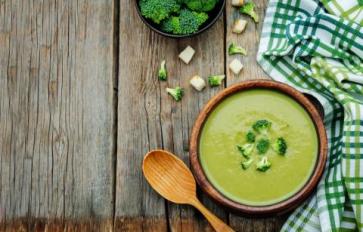
Great medicine awaits in your grocery store’s produce section! As you can gather from the title, I’m talking about mushrooms: rich in protein, essential amino acids, fiber, B vitamins and vitamin D. Many stores now carry some seriously useful shrooms, though if yours doesn’t? Grow your own! Mushrooms are fun to grow and growing kits are available online.
My favorite way to use mushrooms is to eat them, though there are other ways to prepare them medicinally. We’ll get into that in a future installment of this series. Here is my usual way of cooking shrooms.
And now for the mushrooms….
Shiitake (Lentinula edodes)
“Take” means “mushroom” in Japan, while “edodes” means “edible.” Shiitake mushrooms are almost as common as the button mushroom in stores and were first cultivated a thousand years ago in China (1). Shiitake protect the liver from damage, fight viral infections, improve heart and blood vessel health, and even reduce cavities. Eating them several times a week benefits the immune system and may provide some additional cancer preventative properties. In Asia, specific Shiitake preparations are used to reduce side effects and improve outcome of cancer chemotherapy.
My favorite use is for immune and anti-viral support during cold and flu season, when I eat them in soups and stews along with other immune-boosting and anti-viral ingredients like garlic and onions.
Maitake, aka Hen of the Woods (Grifola frondosa)
Maitake means “dancing mushroom” in Japanese (1), and I danced the day I found a huge one in a Philadelphia park! Research has shown maitake to improve immunity and reduce tumor spread in cancer patients, and it has provided benefits in those with leukemia and cancers of the lungs, stomach, or liver (1).
My favorite use for maitake is for metabolic disorders in my clients. It inhibits a starch digestion enzyme, reducing the amount of sugar being released into the bloodstream, and improves cholesterol regulation. Simply eating maitake 3-5 times a week is enough to take advantage of the many health-promoting benefits of this delicious mushroom.
Oyster Mushroom (Pleurotis species)
I found clusters of oysters at the base of some Aspens on my last mushroom outing. What a treat! In France, when someone is lucky enough to find oysters growing on a log, they’ll water the log to encourage growth of these tasty mushrooms (1).
Oyster mushrooms are used in Traditional Chinese Medicine to reduce tension in the musculoskeletal system, and they’re also for nervous system support (2). Aside from simply eating them, my favorite use for oyster mushrooms is for the lungs, where they reduce allergy symptoms and inhibit infections. They also improve cholesterol regulation, support a healthy heart and, like many mushrooms, show cancer-inhibiting effects in studies (2). What’s not to love?
Enoki Mushroom (Flammulina velutipes)
Cultivated enoki are thin, white, straw-like mushrooms. If you have allergies, try eating enoki multiple times a week. Ditto if you are prone to stomach ulcers. Enoki are also used in China to treat liver disease (1). Enoki contain multiple cancer-inhibiting components (2). These benefits and more make them a great regular addition to the diet.
You’ll sometimes see enoki (and button mushrooms) added raw to salads. If so, pick them out. They need to be cooked to inactivate a toxin. Indeed, all of the mushrooms here should be cooked before eating, mainly so that they are digestible.
Button/Cremini/Portabella Mushroom (Agaricus bisporus)
Yup, these are all the same mushroom, and, yes, they have medicinal benefits. White versus brown coloration is simply due to variants of the same species, and portabellas are simply the full grown version of the mushroom.
Found on pizzas everywhere, Agaricus has loads of health promoting properties: Lowering blood sugar, improving cholesterol metabolism (2), and providing valuable nutrients like vitamin B12. Regular consumption of cooked button mushrooms may even reduce breast cancer incidence.
Agaricus species contain agaritine around which there is controversy regarding level of toxicity. To be cautious, store your Agaricus mushrooms in the fridge for a few days and cook before eating…both steps reduce agaritine levels (2).
In the next part of this series, I’ll share some tips on mushroom medicine making. Get shrooming!
Good Resources
1) Hobbs, C. (1986) Medicinal Mushrooms. An exploration of tradition, healing & culture. Botanica Press.
2) Rogers, R (2011) The Fungal Pharmacy. The complete guide to medicinal mushrooms & lichens of North America. North Atlantic Books.








